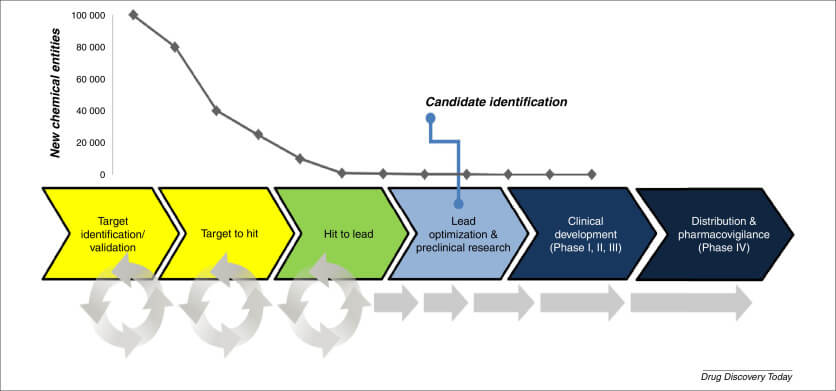Imagine you’re a pharmaceutical executive tasked with bringing a groundbreaking drug to market. Time’s ticking, budgets are tight, and the stakes couldn’t be higher. Enter the Contract Development and Manufacturing Organization (CDMO)—your potential partner in turning scientific innovation into commercial success. But here’s the million-dollar question: how do you navigate CDMO pricing to ensure you’re getting value without draining your resources? If you’ve ever felt lost in the labyrinth of quotes, service tiers, and hidden costs, you’re not alone. This guide is your roadmap to mastering CDMO pricing, transforming raw data into market domination, and making informed decisions that propel your business forward.
In today’s fast-evolving pharma landscape, CDMOs are more than just outsourced vendors—they’re strategic allies. From drug development to large-scale manufacturing, their expertise can save you time, reduce risks, and optimize costs. But understanding their pricing models? That’s where the real challenge lies. Let’s break it down step-by-step, exploring the factors, trends, and strategies that define CDMO pricing in 2025 and beyond.
What Is a CDMO and Why Does Pricing Matter?
A CDMO, or Contract Development and Manufacturing Organization, is a one-stop shop for pharmaceutical companies looking to outsource everything from drug discovery to commercial production. Unlike a Contract Manufacturing Organization (CMO), which focuses solely on manufacturing, or a Contract Research Organization (CRO), which handles early-stage research, a CDMO bridges the gap, offering end-to-end solutions. Think of them as the Swiss Army knife of the pharma world—versatile, specialized, and indispensable.
Pricing matters because it’s the linchpin of your partnership. Get it right, and you unlock efficiency and scalability. Get it wrong, and you’re stuck with ballooning costs or subpar quality. With the global CDMO market projected to hit $465.14 billion by 2032, growing at a CAGR of 8.5%, the stakes are higher than ever. For business professionals, decoding pricing isn’t just about saving money—it’s about leveraging data to dominate the market.
The Core Components of CDMO Pricing
So, what goes into a CDMO’s price tag? It’s not a single number slapped on an invoice—it’s a complex recipe with multiple ingredients. Let’s unpack the core components that shape what you’ll pay.
Service Scope: From R&D to Commercial Scale
The breadth of services you need directly impacts pricing. Are you asking for early-phase formulation development, clinical trial materials, or full-scale commercial manufacturing? Each phase demands different expertise, equipment, and time. For example, producing a small batch of an API (Active Pharmaceutical Ingredient) for a Phase I trial might cost a fraction of what it takes to churn out millions of tablets for market launch. The more you ask of your CDMO, the more intricate—and costly—the bill becomes.
Volume and Scale: The Economies of Scale Effect
Volume is a game-changer. Small runs for clinical trials are pricier per unit because they lack the efficiencies of large-scale production. Picture it like baking: making a dozen cookies costs more per cookie than baking a hundred. A 2023 report noted that small molecule drugs dominate CDMO activity, but biologics—think cell and gene therapies—are on the rise, often requiring smaller, specialized batches with higher per-unit costs.
Complexity of the Product
Not all drugs are created equal. A simple generic tablet is a breeze compared to a cutting-edge biologic like an antibody-drug conjugate (ADC). Complex products demand advanced technology, skilled labor, and stringent quality controls—all of which drive up costs. Industry expert Dr. Jane Carter, a biotech consultant, puts it succinctly: “The more sophisticated the molecule, the more you’ll pay for precision.”
Key Factors Influencing CDMO Pricing in 2025
The pharma world isn’t static, and neither is CDMO pricing. As we stand in February 2025, several trends are reshaping the cost landscape. Let’s dive into the forces at play.
Raw Material Costs and Supply Chain Disruptions
Raw materials are the lifeblood of manufacturing, and their prices are anything but stable. In 2024, supply chain hiccups—think geopolitical tensions and lingering post-pandemic effects—pushed costs up by 15-20% for some APIs. CDMOs pass these increases on to clients, often with little warning. Staying ahead means partnering with a CDMO that’s proactive about supply chain risk mitigation.
Regulatory Compliance: The Hidden Price Tag
The FDA, EMA, and other regulators don’t mess around. Compliance isn’t optional—it’s mandatory, and it’s expensive. CDMOs invest heavily in GMP (Good Manufacturing Practices) facilities, audits, and documentation. A single regulatory misstep can cost millions in delays or fines, so expect pricing to reflect this rigor. As one CDMO exec told me, “You’re not just paying for production—you’re paying for peace of mind.”
Geographical Location: Where the Work Happens
Where your CDMO operates matters. North America, with its robust infrastructure, commands premium rates—think $200-$300 per hour for specialized services. Meanwhile, Asia-Pacific, led by China and India, offers cost advantages, with rates 30-50% lower due to cheaper labor and materials. But lower costs can mean longer lead times or regulatory trade-offs. It’s a balancing act.
Breaking Down CDMO Pricing Models
How do CDMOs structure their fees? It’s not a one-size-fits-all game. Here’s a look at the most common pricing models—and how they affect your bottom line.
Fee-for-Service: Pay as You Go
This model is straightforward: you pay for specific tasks—say, $50,000 for formulation development or $100,000 for a clinical batch. It’s ideal for early-stage projects with uncertain timelines. But beware: costs can snowball if your scope creeps.
Time and Materials: Flexibility with a Catch
Here, you’re billed for labor hours and materials used. It’s flexible, especially for complex projects, but transparency is key. Without clear oversight, you might end up with a hefty tab for “unexpected” hours.
Fixed-Price Contracts: Predictability at a Premium
A fixed-price deal locks in costs upfront—great for budgeting. But CDMOs often build in buffers for risk, so you might pay more than with a variable model. It’s like buying insurance: peace of mind comes at a cost.
The Role of Technology in CDMO Pricing
Technology isn’t just a buzzword—it’s a pricing driver. Advanced tools and processes can make or break your CDMO deal.
Automation and Digital Tools
Automation slashes labor costs and boosts efficiency. A CDMO using robotics for packaging might charge less per unit than one relying on manual labor. Digital platforms, like real-time project tracking, add value but can bump up fees.
Continuous Manufacturing
Traditional batch processing is giving way to continuous manufacturing—a game-changer for efficiency. A 2023 study found it can cut production costs by 20-30%. If your CDMO offers this, expect a higher initial quote but lower long-term costs.
How to Evaluate CDMO Quotes Like a Pro
A quote lands in your inbox—now what? Don’t just skim the total. Here’s how to dissect it with surgical precision.
Look Beyond the Bottom Line
Break it down: what’s included? Labor, materials, overhead? Hidden fees—like tech transfer or regulatory support—can lurk in fine print. Ask for a line-item breakdown to spot overcharges.
Compare Apples to Apples
Not all quotes are equal. One CDMO might bundle analytical testing; another might charge extra. Standardize your evaluation—use a checklist of must-haves to level the playing field.
Assess Value, Not Just Cost
Cheapest isn’t always best. A low bid might mean cut corners or delays. “Price is what you pay; value is what you get,” Warren Buffett once said. Focus on ROI—will this CDMO deliver on time and quality?
Negotiating CDMO Pricing: Tips from the Trenches
Negotiation isn’t a battle—it’s a dance. Here’s how to lead without stepping on toes.
Know Your Leverage
Got a big project or long-term deal? That’s bargaining power. Smaller firms might flex on price to win your business. Use data—market rates, competitor quotes—to back your ask.
Push for Transparency
Ask: “How did you arrive at this number?” A good CDMO won’t flinch—they’ll explain. If they dodge, that’s a red flag. Clarity builds trust.
Secure Scalability Clauses
Lock in terms for future scale-up. A CDMO might offer a discount now if you commit to larger volumes later. It’s a win-win.
CDMO Pricing Trends to Watch in 2025
What’s on the horizon? Let’s peek at the trends shaping CDMO pricing this year.
Rise of Personalized Medicine
Cell and gene therapies are booming, but they’re pricey—small batches, high complexity. Expect CDMOs to charge a premium, with costs per dose ranging from $500,000 to $1 million.
Sustainability Costs
ESG (Environmental, Social, Governance) pressures are real. CDMOs investing in green tech—like energy-efficient plants—might raise rates to offset CapEx. But it’s a selling point for eco-conscious clients.
Case Study: Navigating CDMO Pricing in Action
Let’s ground this in reality. Take BioPharma Inc., a mid-sized firm developing a biologic. They got three quotes: $1.2M, $1.5M, and $2M. The cheapest skimped on analytics; the priciest offered end-to-end support. They chose the $1.5M option—robust services, fair price. Result? On-time delivery, 10% under budget. Lesson: balance cost and capability.
The Risks of Misjudging CDMO Pricing
Get it wrong, and the fallout’s brutal. Overpay, and your margins vanish. Underestimate, and you’re stuck with delays or quality flops. A 2024 survey found 61% of CDMOs face price pressure—some cut corners to compete. Vet your partner hard.
How CDMOs Price Specialized Services
Specialized services—like HPAPI (High Potency API) production—carry a premium. Why? Niche equipment, expert staff, containment systems. Costs can hit $500-$1,000 per kilo, double that of standard APIs.
Global CDMO Pricing Variations
Location shifts the dial. North America’s high labor costs mean higher rates; Asia-Pacific’s lower overheads offer savings. But factor in shipping, tariffs, and time zones—savings can evaporate.
Strategic Partnerships and Long-Term Pricing
Think beyond one-offs. A strategic partnership—say, a 5-year contract—can lock in rates and priority access. CDMOs love stability; you get predictability. Win-win.
Turning Pricing Data into Market Domination
Here’s the kicker: pricing data isn’t just numbers—it’s power. Analyze trends, benchmark competitors, and align costs with goals. A CDMO that saves you 20% on production could fund your next R&D breakthrough. That’s domination.
“In 2024, most CDMOs are fine-tuning their approach to pricing to drive differentiation and foster value creation.”
— Simon-Kucher, State of Pricing 2024 [Source 1]
Key Takeaways
- Understand the Components: Pricing hinges on scope, volume, and complexity—know what you’re paying for.
- Stay Trend-Savvy: Raw materials, regs, and tech shape costs—anticipate shifts.
- Evaluate Smart: Dig into quotes, prioritize value, and negotiate with data.
- Think Long-Term: Strategic partnerships turn pricing into a competitive edge.
- Act Decisively: Use pricing insights to fuel efficiency and market leadership.
Mastering CDMO pricing isn’t just about saving a buck—it’s about turning data into a weapon. Ready to dominate? Your next move starts now.
FAQs
- What’s the biggest factor in CDMO pricing?
It’s a tie between service scope and product complexity. Simple generics cost less; biologics or personalized meds spike the bill. - How can I tell if a CDMO quote is fair?
Compare it to market benchmarks—$200-$300/hour in North America is standard. Ask for a breakdown to spot padding. - Are cheaper CDMOs overseas worth it?
Sometimes. Asia-Pacific saves 30-50%, but weigh shipping and regulatory risks. Quality trumps cost every time. - Can I negotiate after signing a CDMO contract?
Yes, if you build in flexibility—like scalability clauses. Renegotiate based on performance or volume changes. - How do tech advances affect CDMO pricing?
Automation and continuous manufacturing cut long-term costs but might raise upfront fees. It’s an investment play.
Cited Sources
- Simon-Kucher, State of Pricing 2024, April 24, 2024.























